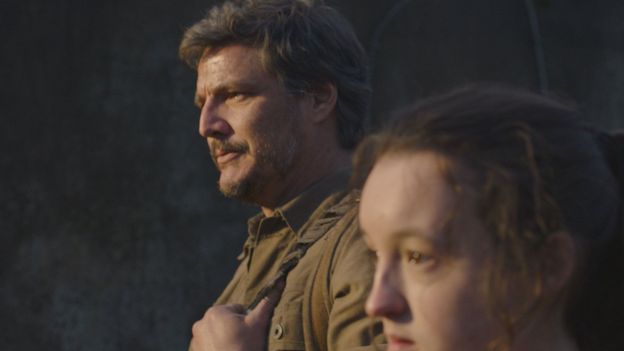
The humour is much needed in the bleak, violent world that they traverse, where people are just as dangerous as the infected. The video game, which is split into four seasons across a year, is episodic in nature, with most locations featuring a sub-plot sketched out in letters and mementos that the player finds. The show builds upon these letters and fleshes them out into fully-formed stories. And it is here, when Druckmann and Mazin are at their most audacious in terms of creative licence, that The Last of Us truly sings as television.
Episode three, for example, turns a series of bitter letters between two men called Bill and Frank (implied to be lovers) into the most tender of romances. Set across two decades, it follows paranoid prepper Bill (Nick Offerman) as he strikes up a relationship with Frank (The White Lotus’ Murray Bartlett), a man who stumbles into one of his many traps. What follows is a beautiful, exquisitely performed exploration of The Last of Us’ central theme: that the ashes of the world are enough, as long as there is someone to live for amongst them.
It is a sentiment that is turned inside-out in episodes four and five, which follow Joel and Ellie as they make their way through the aftermath of a bloody uprising against an especially fascistic branch of FEDRA in Kansas City. The superb Melanie Lynskey (Yellowjackets) features here as the chillingly violent and vengeful leader of the revolution. She wants all collaborators executed, with a special emphasis on a man called Henry (Lamar Johnson), who murdered her brother. These episodes also feature some of the show’s best action sequences, including a huge set-piece involving the infected that is as grisly and gripping as any in the game.
It is not a perfect adaptation. There are certain scenes early on that feel too gamey for television (such as those where Joel and Ellie are sneaking around a museum), while the latter half of the series feels like it needs one more episode to even out the pace (scenes involving the infected are strangely scarce beyond episode five). There is also the fact that no on-screen adaptation of The Last of Us will ever truly capture what makes the source material so interesting: to be immersed in that world, to luxuriate in spaces that feel haunted by absence, to be eaten alive by a Clicker.
And yet, it doesn’t feel even remotely controversial to call this the best video game adaptation ever made. For fans of the game, it is an adaptation of the utmost skill and reverence, yet one still capable of surprise; for people who have never picked up a controller, it is an encapsulation of the game’s heart and soul – its full-blooded characters, its neat plotting, its mature themes of love and loss. It is, to finish Ellie’s joke, “outstanding in its field”.
★★★★☆